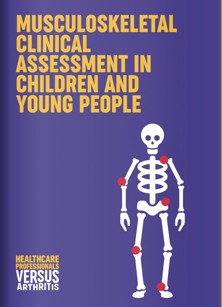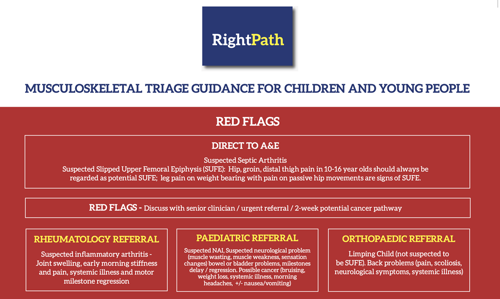Clinical Assessment
Musculoskeletal problems in children are common (estimated at 1 in 8 children); causes range from benign (e.g., hypermobility) to serious (e.g., inflammatory arthritis, neuromuscular causes) or life threatening (e.g., leukaemia, cancer, infection or non-accidental injury). It is always important to consider Tuberculosis and other infections in endemic areas (e.g., Rheumatic Fever, Brucellosis, Chikungunya, Human Immunodeficiency Virus) as the cause of musculoskeletal complaints.
A thorough history and examination are essential to differentiate the various causes, and often play a far more important role than investigations.
In this module, we describe the approach to history taking and physical examination (pGALS as the basic screen and pREMS as a more detailed assessment), why and how this differs from clinical assessment in adult patients, important features (such as differentiating between inflammatory and mechanical problems), when to suspect inflammatory disease and red flags to warrant concern.
We include a section on pain assessment and links to pain assessment tools and SOCRATES as a pain enquiry checklist.
We describe ‘normal variants’ (such as knock-knees and flat feet), normal development and gait, and hypermobility. We describe when to be concerned and when to refer to a specialist.
Interactive cases will help you apply your knowledge in scenarios.
Our pGALS e-Module include interactive cases and a graphic animation demonstration of pGALS.

A revision guide for musculoskeletal examination is available from GeekyMedics.
pGALS, V-pGALS and pGALSplus tools are assessment aids to prompt further investigations or referrals. Other tools are there to support collection of consistent and important information to aid clinical decision making, such as pREMS or GALLOP (Gait and Lower Limb Observation of Paediatrics).
Further information about GALLOP is available and includes the GALLOP recording proforma:
pGALSplus builds on pGALS and aims to help clinicians to determine if a child with a musculoskeletal problem will need specialist referral or not and if so whether to rheumatology, orthopaedics or neurology/neurodisability. A Model of Care involving triage is called RightPath and further information is available and includes the triage guide.



